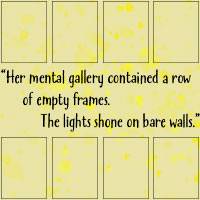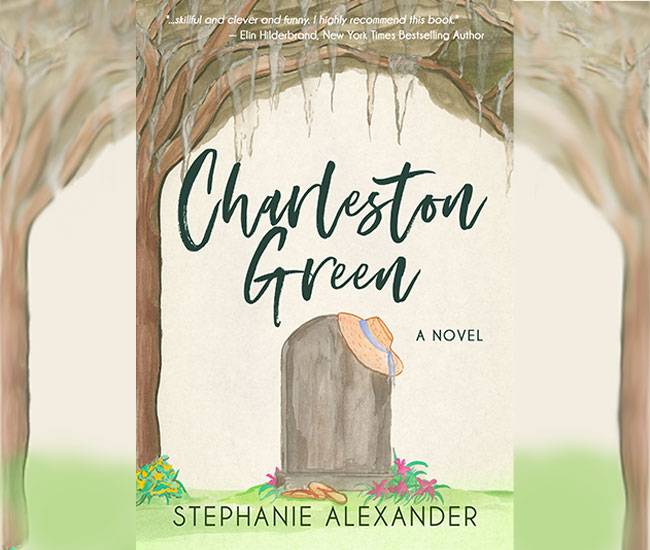Charleston Green by Stephanie Alexander
Charleston Green — the color of the South’s rebellion against the black paint provided for reconstruction, the hue was altered to a dark green tinge with dabs of yellow and blue. This is the backdrop for the stalwart citizens of Charleston, South Carolina. In her novel, Charleston Green (Bublish) author Stephanie Alexander infuses paranormal elements with a Gone with the Wind Southern-charm vibe, then weaves in the heartbreak and challenges of divorce and the struggle of women to take control of their lives.
No one knows that newly divorced painter Tipsy Collins communicates with the already-dead. Well, except for her Granna, who is long gone, but still whispers to her on a psychic level — she’d had the same talent. Granna always told her to ignore the spirits. Their jabbering could be annoying, and some of them might be dangerous. But if she told anyone about it, “that would qualify her own mental church as infested with a bad case of the batshit crazies.”
AN ETERNALLY BICKERING COUPLE
Tipsy (whose nickname has nothing to do with drinking) is no Southern belle, but she’s blessed to rent a gorgeous nineteenth-century house in Mount Pleasant, South Carolina — the recently deceased Miss Callie’s house — while she gains financial independence from her controlling ex-husband, Ayers. Going through the oddities of the “Divorce Twilight Zone,” she thinks the house is perfect for her and their three kids, until she realizes a pair of inhabitants who were murdered there a hundred years ago are haunting the house.
Jane and Henry Mott died in Miss Callie’s house in 1923, both shot in an apparent murder-suicide. But neither ghost can remember what happened. Jane insists Henry killed her, and Henry insists he didn’t. Tipsy’s not sure she can endure their eternal fighting, especially when Henry’s anger results in things breaking. Living in the house with Jane and Henry feels like living in a “vintage, spectral episode of The Jerry Springer Show.”
AN ARTIST PAINTING HER WAY THROUGH THE PAST
 As Tipsy finds her way as a single mom, her paintings take on increased importance as a source of income. Despite the mental and emotional drain of her divorce, she must get her artistic mojo back and paint, but she’s lacked inspiration. When Tipsy realizes she can intimately experience Jane and Henry’s memories of the time before their deaths, she plunges into their pre-death world of sadness, longing and frustration. She soon realizes she must figure out what happened to them. After all, how can they move on if they don’t know which of them is a murderer?
As Tipsy finds her way as a single mom, her paintings take on increased importance as a source of income. Despite the mental and emotional drain of her divorce, she must get her artistic mojo back and paint, but she’s lacked inspiration. When Tipsy realizes she can intimately experience Jane and Henry’s memories of the time before their deaths, she plunges into their pre-death world of sadness, longing and frustration. She soon realizes she must figure out what happened to them. After all, how can they move on if they don’t know which of them is a murderer?
Her forays into the past provide her with the emotional spark needed to inspire her paintings — she can paint Jane and Henry’s innermost feelings. But she also pays a personal cost — each visit to the past deteriorates her health in the present and threatens Tipsy’s custody of her three young children. Her ex thinks she has a drinking problem. She feels like “a grown-up Alice on the other side of the looking glass.” During her investigation into the lives of those long gone, Tipsy realizes that “a woman’s independence is her greatest treasure.” Can she reconcile Jane and Henry Mott’s past while trying to rebuild her present?
A RECONSTRUCTION OF SELF IN THE DEEP SOUTH
Alexander, a family law attorney, uses “her personal experience rebuilding her life after divorce” in her fiction. Her novels paint a portrait of life in the deep south. As Tipsy comments in the novel, “the grittiness below the surface wasn’t just in the contrasting roads and buildings. It was in the people of this beautiful, complicated city. It was in the characters as much as the setting.” Offsetting the drama of Tipsy’s struggle for a new life, Alexander refreshingly interjects charming humor into Tipsy’s dealings with the dead, the mental messages from the spirit of her sassy Granna, and the crazy antics of her besties who are looking for love.
This southern tale of love and loss, life and death, and intricate family dynamics is like a taste of fried green tomatoes with a side of sweet tea, while sitting on the porch’s joggling board painted a deep Charleston Green.





